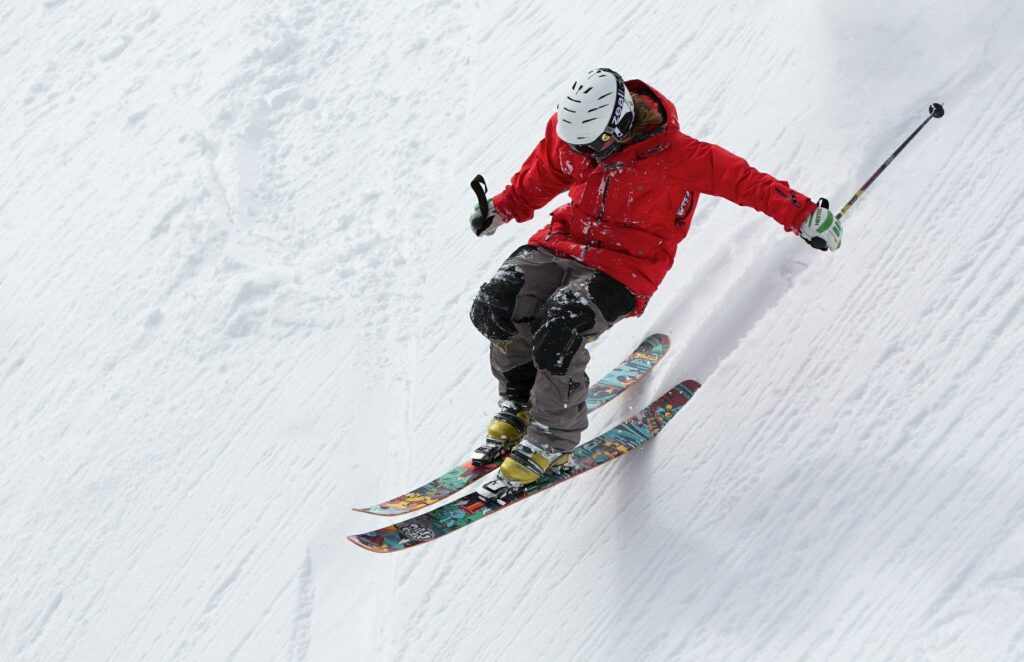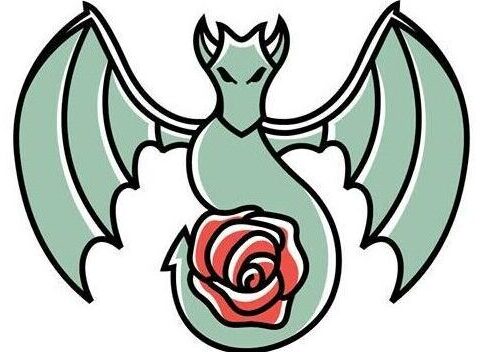
Originally published in Front Vision magazine
Anyone who has watched cross-country skiers lurching uphill during a race, like zombies flailing with ski poles, might be amazed by their strange movements. But when their movements are analyzed on video – their “skating” on the snow, the slight flop of the skier’s body as she drives the poles into the snow — the movements of the skiers are actually very energy-efficient. In a race where skiers use so much power that they literally collapse across the finish line, an uphill dash can be downright exhausting. Scientists that specialize in biomechanics work with these athletes to make every movement powerful, and to make every motion count.
Biomechanics uses elements of physics and anatomy to understand how the human body moves in sporting events. When athletes know what they need to do to get their bodies in better alignment against the many physical forces pushing and pulling on them (such as gravity and centrifugal force), they can move more effectively, using less energy while gaining more power. In the Olympics, races are now won by the millisecond, so athletes must use their bodies – and minds – to shave every bit of time they can from their races. As a result of biomechanics research, equipment and training changed in ways that helped athletes.
How do scientists teach winter athletes to develop their skills – speed, balance, jumping, turning – on snow and ice?
The Importance of Training
Dr. Sarah Konrad, glaciologist for the University of Wyoming at Laramie, and a Winter Olympian, says that training is a huge part of becoming a world-class athlete. “You teach your body to be really familiar with the motions for whichever sport you’re doing,” she said. It doesn’t matter which sport you’re training for – every motion must be learned by the muscles until it becomes habit. This is why repetition is key.
Dr. David Hawkins, biomechanics professor at the University of California at Davis, agrees. “In a lot of types of training, what you’re trying to do is give the athlete a sense of variability, so their body is able to adjust and tune to those things on the fly,” he said.
So, in the lab, scientists study the athlete in order to understand how these simple actions, repeated so they become second nature, can be fine-tuned for more powerful results. For skiers, scientists use a ski simulator in the lab. It’s a device with two one-inch bars that are bent to make a parallel arc eight inches apart, with linear bearings rolling over them. The athlete puts on her platformer boots and, on this device, she can move as a skier does on the slopes. She can slide back and forth and lunge left to right, simulating the up and down motion and the compression that she would experience as she skis in and out of the moguls.
Sensors hooked up to the skier gather information on which muscle groups are firing and get an idea of how much of this effort they can take before they get fatigued. They also look at how the skiers can time and adjust their body posture as they go in and out of the moguls. They do a lot of squat-type training, working on the muscles in the lower parts of their bodies, in order to develop that endurance that gets them through the hard races.
Powerful Impacts
An understanding of biomechanics can really help coaches improve the athlete’s performance. The physical challenges in becoming a world-class are big – and an injury can end an entire career.
This often happens to figure skaters, who often suffer from repetitive strain injuries while they are training.
Figure skaters put on a thrilling display of the laws of physics. But these forces in motion, repeated over and over in their practices, take a heavy toll on their bodies. When skaters land on the ice after a triple axel, they experience an amount of force that is equal to about five to eight times their body weight. So a 122-pound skater coming out of a triple axel can experience from 610 to 976 pounds of pressure in her landing leg. And their bodies have only 50 to 125 milliseconds to absorb the full shock of that force.
When a skater is filmed on high-speed video landing on the ice, you can see the shock of impact rippling through her leg muscles. And professional skaters execute these jumps and landings at least 50 times a day in training. These people are not wimps!
Sarah Ridge, professor and researcher at Brigham Young University, was a figure skater when she was growing up and has always loved the sport. A long-time coach, she hated seeing skaters experiencing injuries that not only end careers but also have a long-term effect on their lives. “Mostly it’s the repetitive impact that can lead to injuries like stress fractures,” she said. Stress fractures are caused when the bone experiences powerful stresses again and again without time to allow the bone to recover.
Dr. Ridge entered the field of biomechanics because “I want to keep skating fun and safe – and a lifetime sport.” Many skaters are forced out of the sport before they’re 30 due to injury.
Dr. Ridge said that gathering an understanding of biomechanics in figure skating presents a number of challenges. Other athletes, like hockey players, skiers, and so forth, are able to carry instruments on their bodies to record stresses in their bodies as they play their sports. Not figure skaters.
“They [skaters] move fast, through a large area, with a large range of motion,” she said. “A small amount of added weight (a concern with the design of our equipment) changes how the skater feels and performs.” A few pounds of equipment fastened to a skate can throw a skater’s center of gravity completely off when she’s doing triple axles and high-speed spins. “The ice is not a friendly environment for technology – circuitry and wires get wet. When we do video analysis, lighting can be difficult in a rink as well.”
The “Smartblade”
It wasn’t until recently, when computer technology shrunk to micro-size, that researchers were able to develop the “smartblade.” Developed recently, the smartblade is a regular skating boot, but with equipment attached that can measure impact, force, and many other things. The boot is light enough to allow the figure skater to execute her routines without being encumbered by heavy equipment.
Before, most of the impacts have been measured in laboratory settings. But there’s a world of difference between the force generated by a person in skates jumping off a box in a laboratory, and the force created by a person flying through the air for a triple lutz and landing on the ice while staying in motion.
The “smartblade” uses strain gauges to record the force of landings on the ice, measures the deformation (or bending) of the blade, and many other things. These measurements will help researchers work on new skating techniques, skate designs, and improve the structure of the skating boot.
Researchers want to use the information gleaned from the smartblade to design a better skating boot – one that can absorb impact and reduce injuries.
“Skaters need to be able to use their ankles,” Dr. Ridge said. “Going through a greater range of motion during landing allows athletes to decrease impact forces. Skaters are limited in how much ankle motion they have because of their boots.” So as research is gathered from these experiments with the smartblade, they might result in a modified skating boot that would allow some bend in the ankle while supporting it.
Dr. Ridge sees good things ahead in the data provided by the smartblade. “It’s been a really long process to get to the point where we’re able to get good on-ice data, so I’m looking forward to getting data from more skaters doing more skills,” she said.
How Skiers Adapt to Snow
Ice skaters do have one thing going for them: In skating, the rinks can be kept at uniform firmness and temperature due to the hard work of the ice technicians. But in skiing, it’s a different story. “There’s a lot of work done by the people putting on the races to make sure conditions are uniform as possible,” Dr. Konrad explained.
Even so, skiers have to adapt to all kinds of snow. Cross-country skiers have rime trails – a kind of hard-packed snow. However, in the Sochi Winter Olympics, the temperatures were very warm, making the cross-country trails very soft and melty. “Soft” conditions are challenging for power skiers.
“The people who have great musculature, great power to weight ratio – they don’t “float” on top as well,” Dr. Konrad said. “They might be pushing real hard and digging a hole.” However, a lighter skier with less power would do better in soft snow. Skiers must adjust. “In conditions that are really heavy and sloppy like that, you try to ski with a very light technique.”
“It’s something you learn,” Dr. Konrad said. “You learn how to ski hills, you learn how to ski flats, you learn how to ski icy snow, you learn how to ski icky snow.”
The Power of the Mind
But the use of biomechanics won’t count for much if the athlete doesn’t develop that mindset – that grit – that keeps them motivated and focused on their goal. “If you have a great athlete that has a great mindset and if they don’t have great biomechanics, they’re not going to be at the elite level,” Dr. Hawkins said.
So what does a skier or skater do on those days when they are tired out and their bodies just want to stay snug in bed?
Dr. Konrad’s voice took on just enough intensity to convey how much her heart is in this. “You just do it. Seriously, that’s the secret. Being a good athlete is in many ways large part mental. The people who are the most successful out there are the ones who are mentally really tough. It’s definitely a “just do it” thing.
“If you have your training plan well-tuned, there’s going to be an awful lot of times when you’re not feeling like going out, but you do anyhow because that’s just what you do – that’s your job.”
Determination and sheer grit is a huge part of the athlete’s job. A lot of people call this “playing hurt” – that is, playing through the pain. Biomechanics is part of that effort to make that hurt less from injuries and more from sheer hard work – the way it’s supposed to be.
